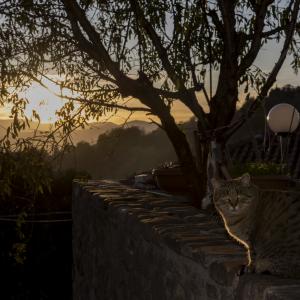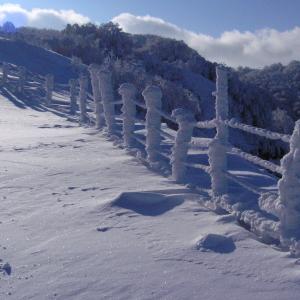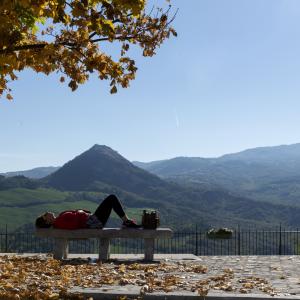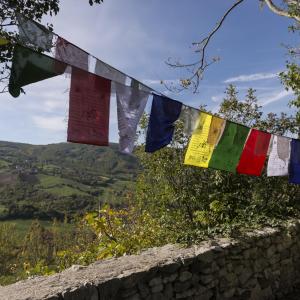Marecchia valley
This long valley has been formed by the Marecchia, a river whose source is in Tuscany on Mount Zucca in the Luna Alps, from where it flows down to its estuary in Rimini.
It is characterized by attractive panoramas which are harmonious yet full of contrast, alternating green hills and cultivated areas with startling spurs of calcareous rock upon which the Malatestas built their castles to control the territory and from which it is possible to enjoy the most extraordinary views in all directions, towards the mountains or towards the sea.
The town nearest to Rimini is Santarcangelo di Romagna where a carefully conserved historic centre complete with old palazzi, cobbled steps and characteristic squares, is dominated by a fortress built by the Malatesta family.
There are also many restaurants and taverns where you can enjoy the authentic Romagnolo cuisine. Faithful to its traditions but open to modernity the town hosts a festival of open-air theatre in July and St. Martin’s Fair in November, two events well-worth attending.
The small municipality of PoggioTorriana lies on three gentle hillsides on which there are still numerous palazzi and villas belonging to the local nobility of past eras as well as irresistibly fascinating water-mills.

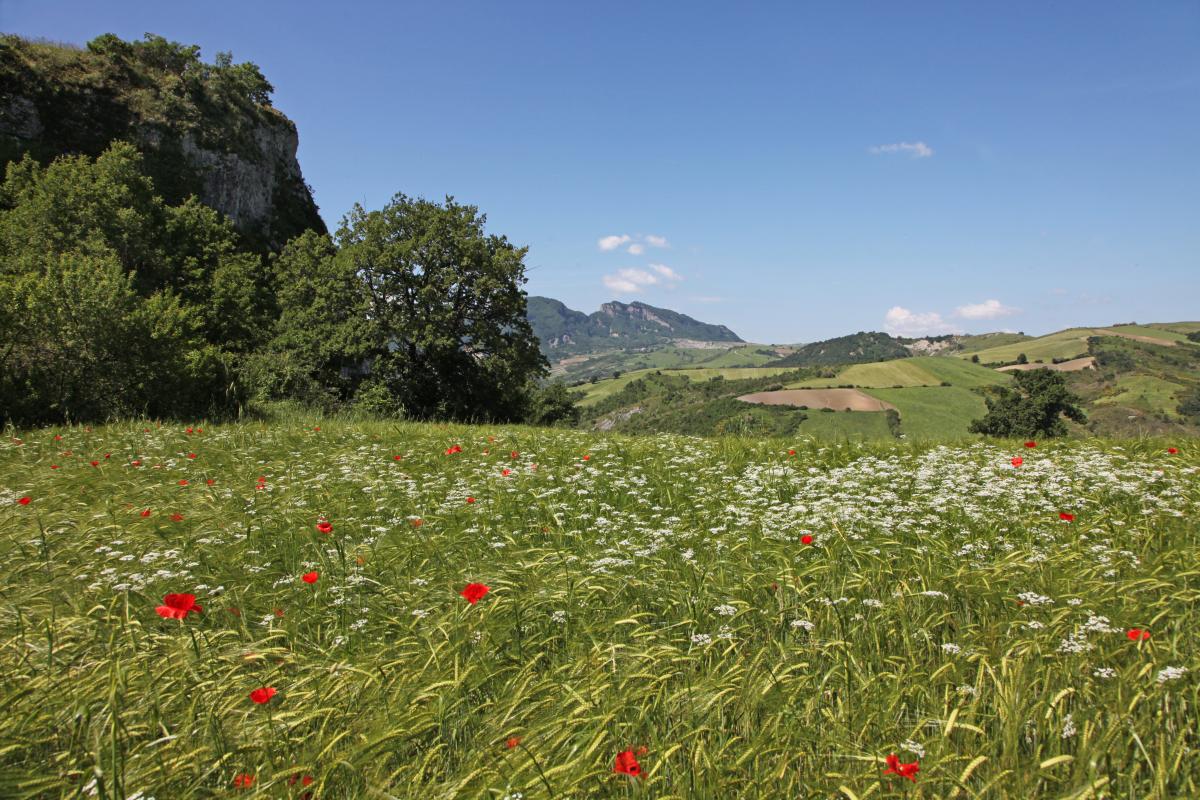
Built high on a spur of rock dominating the plain, Verucchio can be plainly seen for miles around. It rivals Pennabili in its claim to be the “cradle of the Malatestas” and traces of its glorious past can clearly be seen, especially in the historic centre where there are noble palazzi and old churches. The village is dominated by the fortress where, every year, interesting exhibitions, fairs and theatrics take place. Testimony of an important more ancient past can be found in the Archaeological Park and the Villanovian Museum where a splendid Etruscan throne can be admired.
The original name of Torriana was Scorticata (also the name of the traditional fair celebrating the local wine and cuisine) which means ‘scratched and scraped’, well expressing the idea of this little village clinging to the high bare rock. The Malatestas built a fortress here to guard the ‘Via Maior’, the old road which wound its way up the Marecchia Valley to Tuscany. The tiny village of Montebello is an authentic historic gem with a castle and a bundle of legends belonging to it.
From here it is only a short distance to the Alto Valmarecchia (the upper end of the valley) the heart of the old Montefeltro region, the place where many famous great men loved to stay, Dante, St: Francis, Cagliostro and Ezra Pound.
The upper Marecchia valley is much appreciated by visitors for its uncontaminated environment, incomparable panoramas, historic remains and famous local products which are famous all over the world.
The first place encountered after Verucchio is Torriana after which the traveller is led on to San Leo, the gateway to the Montefeltro region. Its fortress rises up among the clouds anchored to a massive outcrop of rock, the prime motive for its leonine excellence. The historic centre is completely unspoiled with a Romanesque parish church next to the Cathedral and the Palazzo Medici, as well as the austere fortress where Cagliostro languished in prison.
A summer festival is dedicated to the memory of this famous alchemist.
Novafeltria is a dynamic little town at the centre of the Marecchia valley where commercial and industrial activities are carried on and from the point of view of historic and artistic interest; there are several Romanesque parish churches of the XIth century.
Talamello is famous for its chestnuts and Ambra a kind of Formaggio di fossa (cheese matured underground in pits) - the object of a special fair held there in autumn. In the parish church there is the Miraculous Talamello Crucifix of the school of Giotto

On the other hand, agriculture is the order of the day in Maiolo, the second smallest municipality in the valley, famous in past times for its bread. In fact, in June there is a traditional fair dedicated to this traditional product. Pennabili is situated in the upper Marecchia valley and occupies a third of the territory assigned to the Natural Park of Sasso Simone and Simoncello. It is the chosen residence of Tonino Guerra, a poet and writer who has created a kind of open-air museum around the historic and artistic remains of two old castles, one in Billi, on the top of the cliff and the other in Penna on the Roccione (Great Rock).
The ruins of two castles are preserved at the two ends of the village of Villagrande: the well-known and main castle of Montecopiolo and the small castle of Monte Acuto (today Monte San Marco).
The castle of Montecopiolo, with its significant ruins surrounded by the greenery of conifers, still provides important data for archaeological research, in addition to splendid views. Also in the municipal area are the ruins of the small castle of Monte Boaggine.
Going still further up river you arrive at Casteldeci, a place without a single factory, where the level of pollution is zero and the surrounding countryside unspoiled. Sant’Agata Feltria, with its monumental castle is the last place in the valley under the jurisdiction of Rimini. Apart from its beautiful countryside, this locality is well-known for its prized white truffles, an excellent product which is celebrated by a National Fair in October.
Contacts
saluteviaggiatore.it
tel. +39 0541 1788204
info@saluteviaggiatore.it
www.explorevalmarecchia.it
tel. +39 0541624270
support@explorevalmarecchia.it

